Meet The Emerging Company Showcase Speakers
-

Ran Yam
NovaSight, Airport City, Israel
Ran Yam
NovaSight, Airport City, IsraelECS01
NOVASIGHT IS A GROWING MEDICAL DEVICE COMPANY WITH ITS FLAGSHIP PRODUCT – CURESIGHT™ – FDA CLEARED AND CE MARKED REMOTE DIGITAL EYE TRACKING BASED AMBLYOPIA TREATMENT SYSTEM, THE ONLY DIGITAL DICHOPTIC THERAPY FOR AMBLYOPIA PROVEN TO BE NON-INFERIOR TO THE PATCH.
R.Yam1,*
1NovaSight, Airport City, Israel
Established in 2016, NovaSight is a growing ophthalmology medical device company with a vision to change the lives of millions by introducing eye-tracking-based vision care solutions and data analytics into fun and engaging medical devices with an emphasis on the unique needs and attention spans of children. NovaSight is focused on three main segments: Amblyopia treatment, Myopia prevention and Vision diagnostics.
Commercially available in the US and Italy since early 2023, CureSight™ is an FDA-cleared and CE-marked amblyopia treatment system, designed to replace the traditional eye patching. The treatment is carried out while the patient watches their favorite streamed content from the comfort of their home. To date, CureSight is the only solution that has proven effective in a pivotal study against the gold standard patching in children.
By tracking the gaze position of the dominant eye in real-time, the CureSight system blurs its center of vision, while keeping the rest of the image sharp, providing the amblyopic eye with a normal, high-contrast, image. This stimulates the brain to complete the blurred image from the amblyopic eye, improving its acuity and developing stereoacuity as the eyes learn to work together. In addition, the CureSight system is connected to a dedicated cloud platform which allows the physician to monitor treatment progress and compliance remotely.
Since launch earlier last year, CureSight had gained strong adoption by both eye care providers and patients, with over 250 eye care providers already enrolled in the CureSight Referral Program. NovaSight is continuously onboarding additional prominent clinics, resulting in the active availability of the CureSight Referral Program in 35 states with over 650 patients referred so far.
The company’s goals include a global launch of CureSight, Europe launch of the EyeSwift PRO, and further development of additional products.
Company website: https://nova-sight.com/
-

Dimitri Chernyak
Intelon Optics,Woburn,United States
Dimitri Chernyak
Intelon Optics,Woburn,United StatesECS02
MEASURING OCULAR BIOMECHANICS BY BRILLOUIN IMAGING
D.Chernyak1,1,*
1Intelon Optics, Woburn, United States
Intelon Optics is a medical device company focusing on the development and commercialization of the Brillouin Optical Scanner System (BOSS™), a technology that enables non-invasive, next-generation point-by-point biomechanical imaging of living tissue and cell structures, with initial applications in Eye care (Ophthalmology) and Fertility (IVF – In Vitro Fertilization).
In Ophthalmology, BOSS delivers novel diagnostic solutions to eye care professionals for high-level decision-making confidence based on biomechanical properties of the eye. Primary clinical applications are early detection of corneal deseases, refractive surgery screening and customization, reduction of post-cataract surgery astigmatism with custom AKs and LRIs. BOSS core technology, the ultra-narrow bandwidth laser and the Brillouin spectrometer, provides a common platform engine for all its medical applications.
Company website: www.intelon.com
-

John C. Berestka
Northwest Eye, Minneapolis,United States
John C. Berestka
Northwest Eye, Minneapolis,United StatesECS03
LIGHTFIELD MEDICAL: AUTOMATED CAPTURE OF THE SLIT LAMP EXAM—REINVENTING AN 85- YEAR OLD TECHNOLOGY
J. C. Berestka1,*
1NORTHWEST EYE, MINNEAPOLIS, United States
The ophthalmic slit lamp–the heart and soul of ophthalmology–has not seen any innovation in decades. The current slit lamp exam paradigm requires the doctor to be present in the room with the patient. The slit-lamp exam is ephemeral and cannot be digitally saved. Existing slit lamp cameras slow down the encounter, provide inadequate images and cannot be delegated to a typical technician. Limitations in current slit-lamp technology preclude adequate telemedicine in ophthalmology and throttles ophthalmologist productivity.
Ophthalmologists have been able to delegate retinal and optic nerve imaging to technicians for decades. The missing link in ophthalmology is a way to automatically capture the slit-lamp exam. Our medical device uses proprietary technology to capture the entire slit-lamp exam. A minimally trained technician only needs to align the device on the pupil and press a button. The device takes over and then images the anterior segment for the ophthalmologist. The eye doctor can then navigate through the the exam in any order using gestures on an iPhone and iPad. Patients can now see their own slit-lamp findings either in the office or in the comfort of their home.
Our patented technology (4 US and 1 UK patent granted) will allow eye doctors to more efficiently see patients by delegating exam acquisition to technicians. imagine a scenario where postop or brief exam patients are seen by a technician at a satellite office close to their home. The exam could later be reviewed by an ophthalmologist in between surgeries. Findings and instructions could be communicated back to the patient by a quick video text.
Our medical device will be increasingly needed as eye care is about to experience a productivity crunch. The US National Eye Institute predicts a 24% increase in ophthalmology demand by 2023 due to an aging population, yet the ophthalmology supply is expected to decline by 12% during the same period.
Our product will allow the entire slit-lamp exam to be fully documented for the first time. With our technology eye exams can now be compared from visit to visit, and from doctor to doctor. The standardized lighting and viewing angles will create a homogenous image database for artificial intelligence.
Patients can be given a copy of their eye exam to view on their phones, in much the same way that patients can now scroll through their MRI exams in apps such as MyChart in the US.
Currently, less than 1% of eye exams are done through telemedicine, because until now there was no good way to capture the examination of the front of the eye.
Our device will cost half as much as a wide-field retina camera such as Optos, providing value to patients and doctors. Our medical device could bring eye care to remote areas of the world that are currently underserved by eye doctors.
Company website: https://lightfieldmedical.com
-
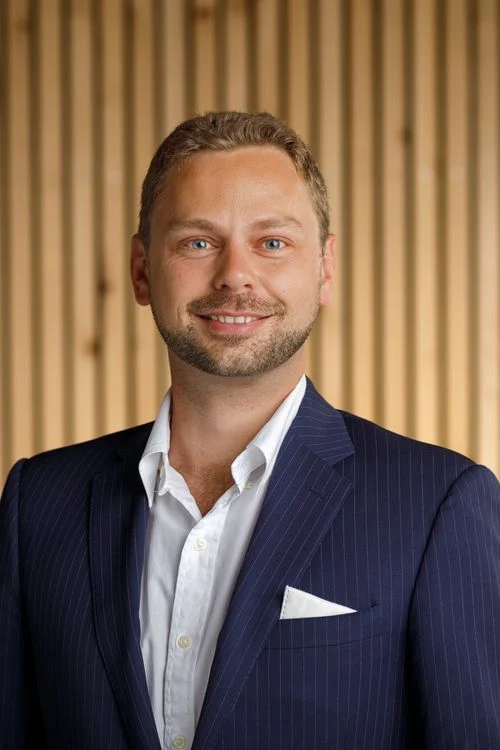
Phil Norris
machineMD, Bern, Switzerland
Phil Norris
machineMD, Bern, SwitzerlandECS04
MACHINEMD LAUNCHES NEOS™ – THE WORLD’S FIRST NEUROPHTHALMOSCOPE
P. Norris1,*
1machineMD, Bern, Switzerland
machineMD is a medical device startup innovating at the intersection of neuroscience and ophthalmology. The company was founded in 2019 as a spin-off from the Eye Movement Laboratory of the University Hospital of Bern, Switzerland, where it retains headquarters, and now also has a subsidiary in Boston, USA.
We believe objective eye exams increase healthcare provider efficiency, reduce clinical error and improve patients’ quality of life.
Launched in 2024, machineMD’s flagship device is neos™ – the world’s first neurophthalmoscope – an automated medical device that supersedes the need for manual assessments of eye movements and pupillary function that are conducted daily by optometrists, comprehensive ophthalmologists, and general neurologists.
Current starndard of care is manual, time-intensive, subjective examinations. Misdiagnosis in primary and secondary care is evident in 50% of neuro-ophthalmic referrals, leading to significant harm for 26% and unnecessary procedures for 80% of those patients. Median referral time to a neuro-ophthalmologist is 200 days, with a recognized shortage in filling these subspecialty fellowships and full-time positions.
To address this unmet need, neos™ enables medical assistants to perform a fast, objective, standardized examination of eye movements and pupillary function, leveraging an industry-leading VR headset with gamified stimuli. High-frequency eye tracking enables neos™ to empower primary, secondary, and tertiary care providers with quantitative reports compatible with electronic health record systems.
Abnormalities in eye movements and pupillary function are closely linked to neurological disorders, with the potential to serve as important digital biomarkers for the diagnosis and monitoring of inflammatory and neurodegenative disorders. Together with neurologists, machineMD’s solution is already used to study people living with Multiple Sclerosis, Parkinson’s Disease, Myasthenia Gravis, and beyond.
Company website: www.machinemd.com
-
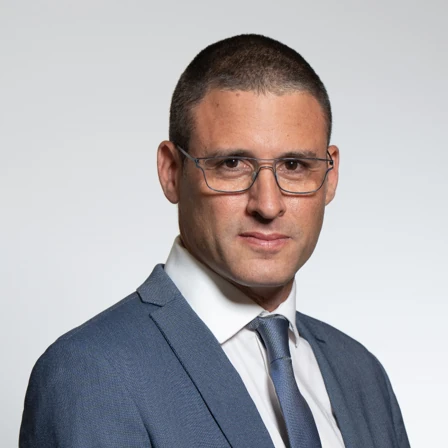
Nir Israeli
EyeMed Technologies Ltd., Ramat Gan, Israel
Nir Israeli
EyeMed Technologies Ltd., Ramat Gan, IsraelECS05
VALENS – POST OPERATIVE ADJUSTABLE INTRAOCULAR LENS
N. Israeli1,*
1EyeMed Technologies Ltd., Ramat Gan, Israel
EyeMed Technologies Ltd. is a medical device start-up company that focus on the Cataract surgery market, specifically, on the Premium IOL segment. The company develops an intra-ocular lens, called VaLens™, which enables the physician to precisely adjust the power of the lens in a non-invasive postoperative, office-based, simple treatment. EyeMed’s vision is to guarantee Emmetropia (best vision possible) and “glasses off” for every lens implanted patient. There is a significant number of cases in which, post-Cataract surgery, the patient is left with a refractive error causing the patient a deficiency in his eyesight because of misalignment of the focal point of the lens. Today there are solutions for residual refractive errors due to IOL misposition, however they are either a burden on the patient (whether it is to wear eyeglasses or to settle for a deficient vision) or they require additional surgical procedures with all attached risks and resources. The VaLens™ innovative solution is intended to be implanted in every Cataract surgery embedding a premium lens and to enable simple solution to all those patients that need a postoperative adjustment after implantation.
Cataract surgery is the most frequent surgical procedure in medicine today, with about 30M surgeries performed annually. The premium IOL segment sales projection, in 2024, is a $3.1B annual revenues. Studies show that 28.8% of Cataract implanted patients have a residual refractive error bigger than 0.5D and 7% more than 1.0D, errors that should be corrected. Ophthalmologists have been implanting multifocal and premium technologies since decades, and still this technology has been used in only 3-9% of lens implantations world-wide. Percentage of usage is not growing even there are lots of efforts in this direction, mostly because surgeons do not feel confident enough to be able to guarantee their valuable patients that they will have emmetropia post-surgery. Additionally, surgeons prefer not to deal with the likelihood of post-surgery touchups that require additional time, resources and are a burden from a patient perspective. EyeMed’s device, the VaLens™, will deliver surgeons the confidence they need with reduced resources and ensure patients with the best results.
The VaLens™ foldable adjustable IOL consists of a nitinol mechanism placed in a haptic-optic cradle. Heating actuators on the nitinol mechanism with a continuous green laser achieve controlled movement of the mechanism and optic. Activation occurs in controlled steps: rotation in 1-degree steps and anterior posterior movement in 0.25D steps with a range of +1.50D. The IOL was tested in vitro and in vivo in a rabbit eye. Foldability and unfolding were demonstrated through a 2.6-mm cartridge.
Company website: www.eyemed.co.il
-

Mikhail V. Tsurkan
TissueGUARD GmbH, Dresden, Germany
Mikhail V. Tsurkan
TissueGUARD GmbH, Dresden, GermanyECS06
SUBSTITUTION REGENERATIVE THERAPIES FOR LIMBAL, ENDOTHELIAL, AND RETINAL DYSFUNCTION
M. V. Tsurkan1,*
1TissueGUARD GmbH, Dresden, Germany
TissueGUARD GmbH is a privately-funded biotechnology company dedicated to developing and producing advanced hydrogel materials as medical devices. Our mission is to create innovative biotechnology solutions for tissue and organoid engineering as regenerative therapeutics.
At TissueGUARD, we have developed proprietary hydrogel materials that are fully defined, sacrificially degradable, and capable of supporting the growth of almost any cell type. Our unique technology allows for the on-demand removal of the device without harming the formed organoids or tissues, enabling the formation of physiological-sized, donor-like grafts. This scaffold-free approach simplifies tissue and organoid implantation, enhances therapeutic outcomes, prevents implantation-associated complications, and significantly reduces regulatory certification burdens in both the EU and the USA.
Our cutting-edge bioengineering capabilities have led to remarkable advancements in ocular regenerative approaches. Our technique enables the formation of corneal endothelium grafts with preformed Descemet-like membranes. It has also been shown to form retinal pigment epithelium (RPE) with preformed Bruch’s membrane. These pioneering tissue graft technologies have demonstrated potential in stabilizing surgical implantation and improving outcomes in ophthalmologic procedures. TissueGUARD’s technology not only addresses the critical shortage of donor tissues but also paves the way for comprehensive regenerative therapies for limbal, endothelial, and retinal dysfunctions.
Company website: https://tissueguard.de/
-
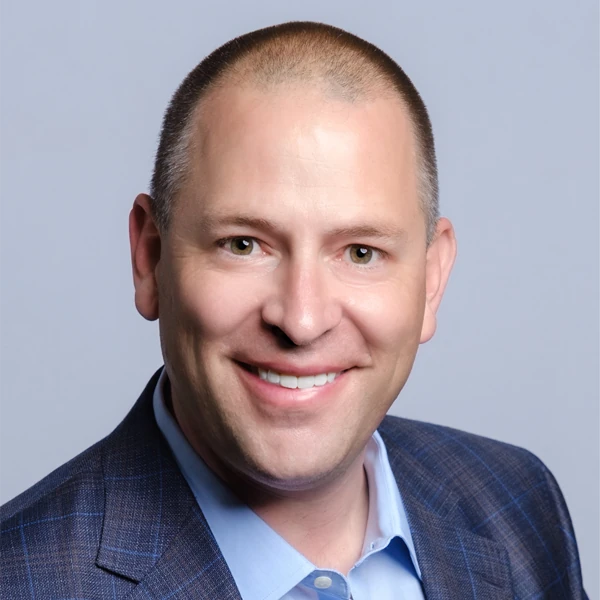
Greg Kunst
Aurion Biotech, Seattle, United States
Greg Kunst
Aurion Biotech, Seattle, United StatesECS07
TRANSFORMATIONAL CELL THERAPY FOR CORNEAL ENDOTHELIAL DISEASE
G. Kunst1,*
1Aurion Biotech, Seattle, United States
Aurion Biotech is a clinical-stage biotech company, whose mission is to restore vision to millions of patients with life-changing regenerative therapies. It received the prestigious Prix Galien award for best start-up in biotech. Its first candidate, AURN001, is for the treatment of corneal edema secondary to corneal endothelial disease, and the first clinically validated cell therapy for corneal care, having received regulatory approval in Japan. The Company has completed enrollment and dosing of subjects in its Phase 1/2 clinical trial in the U.S. and Canada, and expects to share topline data in early 2025. Privately held, Aurion Biotech is backed by Deerfield, Alcon, Petrichor, Flying L Partners, Falcon Vision / KKR, and Visionary Ventures.
Company website: www.aurionbiotech.com
-

Sunil Shah
Aston University, Birmingham, United
Sunil Shah
Aston University, Birmingham, UnitedECS08
A NOVEL HAND HELD UVC EMITTING DEVICE FOR TREATING INFECTIOUS KERATITIS CAUSED BY A WIDE RANGE OF MICROBES THAT IS SIMPLE AND RAPID TO USE IN CLINIC WITHOUT ANY RISK OF INCREASING RESISTANCE THROUGH SPARING THE USE OF TOPICAL ANTIMICROBIAL AGENTS
S. Shah1,*
1Aston University, Birmingham, United Kingdom
We are developing a patented ultraviolet C device to kill corneal infections in humans and animals. The device can be hand held and slitlamp mounted. The infected corneal ulcer is treated for 5 seconds. UVC is effective against bacteria, viruses and fungi and hence can be used for any type of infection either alone or in addition to conventional treatment.
Technology: UVC is well known to be antimicrobial and has been used for sterilisation in many industries. More recently LEDs have become available of the appropriate wavelengths to enable a hand held device to be made. Extensive work has shown that with the dose of UVC being used, there is a 100% kill rate in animal studies with no lasting damage to healthy tissue. There is no microbial resistance.
Patient pool: 600,000 human corneal infections and 6 million animals (primarily cats and dogs) corneal infections per year in USA and Europe. In countries like India, 2 million monocular blindness from corneal infections.
IP Protection: First layer patents granted and second layer pending.
As regulatory hurdles are less with the animal market, plan is to start in that space initially while the human studies and regulatory process is on going. Animal income to help fund human studies.
Device time line: Prototype available Q3 2024 and commercial device available Q1 2025.
Team: A combination of practicing ophthalmologists, academic researchers, ophthalmology entrepreneur, veterinary surgeons and accountant/entrepreneur in multiple spaces
USP: Novel, immediate effect and cost effective in a market that has not had significant changes for many years.
The aim of the presentation would be to help raise awareness and to meet potential investors or partners both for distribution and/or acquisition.
Company website: www.photon-therapeutics.com
-

Marco Lombardo
Studio Italiano di Oftalmologia, Rome, Italy
Marco Lombardo
Studio Italiano di Oftalmologia, Rome, ItalyECS09
UNVEILING INCISION-FREE THERANOSTIC TECHNOLOGY FOR THE CORRECTION OF VISUAL DISORDERS
M. Lombardo1,*
1Studio Italiano di Oftalmologia, Rome, Italy
Regensight is pioneering a groundbreaking advancement in eye care with theranostics, a cutting-edge method that revolutionizes the treatment of visual disorders using an incision-free approach. Theranostic-guided UV-A light photo-reshaping leverages the principles of theranostics and the therapeutic potential of UV-A light to non-invasively reshape corneal tissue. This promising technique can treat a variety of visual disorders across all age groups. Theranostics combines diagnostic and therapeutic functions into a single sophisticated platform, involving advanced molecular imaging and targeted UV-A light photo-reshaping process delivered simultaneously. The key aspects of how this technology can revolutionize ophthalmic care include:
- Targeted Drug Delivery: theranostics enables fast and precise targeted delivery of riboflavin to specific regions of the corneas, ensuring optimal therapeutic concentration and enhancing treatment efficacy under UV-A light mediated photo-reshaping procedures.
- Real-Time Monitoring: the integration of diagnostic and therapeutic functions allows for real-time monitoring of treatment efficacy. Molecular imaging technologies provide immediate feedback on how the cornea is responding to treatment, enabling adjustments to be made quickly and accurately.
- Minimizing Invasive Procedures: by eliminating the need for surgical incisions, theranostics reduces the risk of complications, such as infections and corneal scarring.
- Enhanced Patient Experience: patients undergoing incision-free theranostic procedures experience less discomfort and shorter recovery times compared to traditional surgical methods. The non-invasive nature of these procedures can reduce patient anxiety, improve overall satisfaction with care and increase demand for refractive treatments.
The technology has undergone pre-clinical and clinical validation demonstrating the theranostic platform’s capability to predictively personalize therapeutic outcomes for keratoconus. The multicenter, randomized, masked, ARGO trial (NCT05457647) validated the capability of the theranostic platform to treat keratoconus and predict clinical outcomes with 91% accuracy and 95% precision. The clinical trial outcome are published in Ophthalmology, the top-ranked journal in the field. This evidence marks a significant advancement towards predictive personalized care for keratoconus, delivering precise and effective results that will benefit patients and society.
Regensight is now advancing with an innovative platform harnessing the power of theranostics to correct the most prevalent visual disorders across all age groups. The new platform aims to improve uncorrected visual acuity without the need for invasive surgery, particularly in individuals with low-grade myopia and presbyopia. Regensight is seeking investment from corporate investors to support the clinical development of this new platform.
Company website: www.regensight.com
-
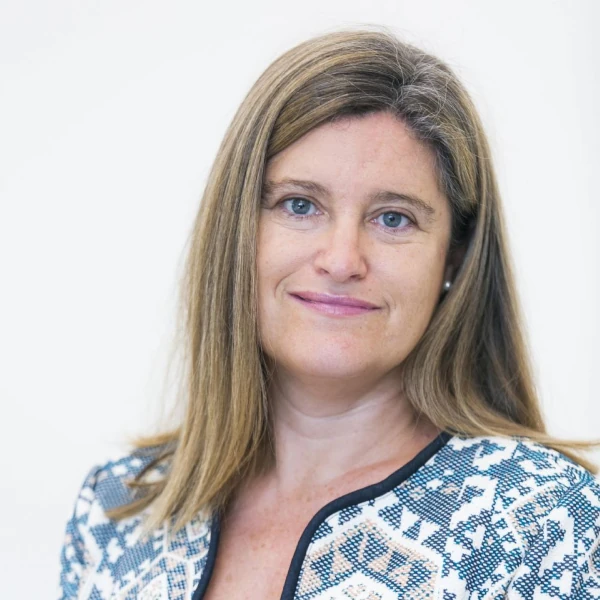
Susana Marcos
CSIC, Madrid, Spain; University of Rochester, Rochester, United States
Susana Marcos
CSIC, Madrid, Spain; University of Rochester, Rochester, United StatesECS10
VISUAL SIMULATION TECHNOLOGY FOR MULTIFOCAL CORRECTIONS BEFORE CATARACT OR PRESBYOPIA CORRECTING SURGERY.
S. Marcos1,2,*
1CSIC, Madrid, Spain, 2University of Rochester, Rochester, United States
UNMET NEED
Presbyopia is a non-preventable, gradual, and irreversible eye condition that involves the loss of the ability to focus on near objects. It causes strong visual symptoms in >80% of the population over the age of 50, >2 billion people by 2024.
There are many types of multifocal lenses, implanted in the eye during presbyopia surgery (and also cataract surgery), each one providing a different visual experience.
The effect of each lens is difficult to explain, and patients cannot experience what their actual vision will be like after eye surgery. The lens to be implanted is selected in a mere conversation, without considering their feedback.
The current suboptimal lens selection process in presbyopia and cataract surgery reduces postoperative satisfaction and is a major barrier to prescribing premium corrections.
OUR TECHNOLOGY AND SOLUTION
SimVis technology is based on temporal multiplexing of tunable lenses (TLs). The lens changes its optical power in response to an electric signal
2EyesVision’s technology allows presbyopic patients to experience the real world through existing intraocular lens models and try them on before implantation, providing feedback to the doctor in order to support the selection of the most suitable IOL
Our first product, SimVis Gekko, is a visual simulator for presbyopia and cataract surgery that for the first time allows patients to try on different premium corrections before surgery. It is a head-mounted, binocular, see-through optical instrument, providing a natural visual experience.
Company website: www.2eyesvision.com
-

Aurélie Béglé
Kejako, Saint-Etienne, France
Aurélie Béglé
Kejako, Saint-Etienne, FranceECS11
LOW ENERGY FEMTOSECOND LASER TREATMENT TO RESTORE ACCOMMODATION CAPACITY TO THE CRYSTALLINE LENS
A. Béglé1,*
1KEJAKO, SAINT-ETIENNE, France
Purpose
To restore crystallin lens capacity of accommodation by changing its mechanical characteristics, using low energy femtosecond laser.
Methods
We used finite element simulation of the whole eye to understand and model the process of human accommodation and its degradation over time (presbyopia). Our model also allowed us to target treatment.
We tested this treatment on ageing pig lenses ex vivo (stiffer than young lens).
Mechanical characteristics were measured before and after laser treatment and compared to controls.
The same treatment was applied on rabbit in vivo to assess its safety.Results
The delivery of sophisticated femtosecond laser energy pattern shows an ability to soften lens while preserving its transparency (EX-VIVO study) and a potential capacity to restore 1.5 diopters of accommodation.
The treatment is extremely safe, no rabbit has developed cataractogenesis or suffered damage to the retina or cornea (IN-VIVO study).
The coupling between laser and the eye allowing homogeneous and well-localized treatment is safe and repeatable.
Conclusions
The contemplated treatment has shown safety and performance, leading to a preclinical proof of concept.
The development of prototype and optimized and customized treatment protocol will be performed to prepare the first in man clinical test.
Company website: https://www.kejako.com
-
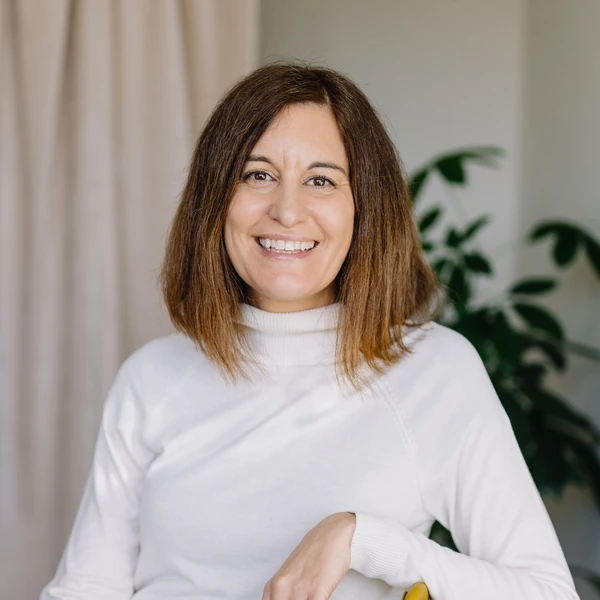
Úrsula Jaén
Ophtec, Groningen, Netherlands
Úrsula Jaén
Ophtec, Groningen, NetherlandsECS12
PRECIZON GO. A NEW CONCEPT OF ENHANCED INTERMEDIATE VISION IOL
Ú. Juén1,*
1Ophtec, Groningen, Netherlands
The evolution of contemporary lifestyle and standards has led to new demands from our patients. Spectacle independence for intermediate distances and high-quality of vision are in the center of such demands. Addressing these needs, Ophtec has developed an innovative intraocular lens (IOL) that represents a significant step forward regarding enhanced intermediate vision. This new IOL is precisely engineered with an ingenious technology to elevate the standard for extended range of vision solutions. Ophtec´s main goal was to create an IOL that would provide an excellent intermediate vision while maintaining the quality standards of monofocal lenses for distance vision. Overcoming this challenge resulted in the development of Precizon Go, a new IOL with a unique and patented diopter profile with combined aspherical aberrations in three distinct areas.
This new Precizon Go IOL has demonstrated excellent performance both in bench and clinical studies. Bench study results show similar MTF curves for both Precizon Go and Precizon Monofocal confirming the high-manufacturing standards of the new design. Additionally, the simulated defocus curve demonstrates a clear advantage of the Precizon Go IOL within the defocus range of -0.50 D to -2 D. On the other hand, outcomes from the clinical study demonstrate an excellent performance of Precizon Go both at far and intermediate distances. Mean monocular best corrected distance visual acuity was of 0,00 ± 0,06 LogMAR, and monocular best corrected intermediate visual acuities were 0,14 ± 0,09 LogMAR and 0,2 ± 0,07 LogMAR at 80cm and 66cm respectively. High rates of patient satisfaction were also found, with 100% and 94% of patients reporting to be very satisfied or satisfied with far and intermediate vision respectively. During the Innovation Day session, more insights on the design, engineering and performance of the Precizon Go IOL will be presented.
Company website: www.ophtec.com
-
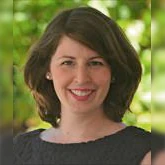
Julie Schallhorn
University of California, San Francisco, San Francisco, United States
Julie Schallhorn
University of California, San Francisco, San Francisco, United StatesECS13
DESIGN, EX SITU, AND IN VIVO RESULTS OF THE JELLISEE ACCOMMODATING IOL
J. Schallhorn1,*
1University of California, San Francisco, San Francisco, United States
A sufficiently effective accommodating intraocular lens (IOL) to replace a cataractous or dysfunctional lens is not currently available, despite decades of development efforts. Using known biomechanical properties of the pediatric human lens, a shape changing accommodating IOL was designed and tested.
The JelliSee Accommodating IOL design was tested with FEA analysis and Zemax optical modeling. A prototype IOL was manufactured and tested with a custom lens stretcher and laser measurements. The prototype accommodating IOL was then tested in a primate. Based on the results in bench testing and the primate, the IOL was implanted in 10 human subjects outside the US
FEA analysis and Zemax optical modeling using the known forces of the human eye, predicted the JelliSee accommodating IOL would be capable of an amplitude of accommodation of 7 diopters. Results of optical bench testing and stretcher testing of a prototype JelliSee accommodating IOL also demonstrated excellent visual quality and an accommodation amplitude of 7 diopters. Primate testing demonstrated 7 diopters amplitude of accommodation up to 15 months post implantation. Preliminary results of human implantation have demonstrated a significant and sustained amplitude of accommodation similar to the results of ex-situ modeling and in vivo primate testing.
The JelliSee Accommodating IOL, based on the biomechanics of the pediatric human lens, has demonstrated a significant amplitude of accommodation ex situ and in vivo. Such an accommodating IOL has potential benefits for adults and children with a diseased or dysfunctional lens.
Schallhorn JM, Pantanelli SM, Lin CC, Al-Mohtaseb ZN, Steigleman WA 3rd, Santhiago MR, Olsen TW, Kim SJ, Waite AM, Rose-Nussbaumer JR. Multifocal and Accommodating Intraocular Lenses for the Treatment of Presbyopia: A Report by the American Academy of Ophthalmology. Ophthalmology. 2021 Oct;128(10):1469-1482. doi: 10.1016/j.ophtha.2021.03.013. Epub 2021 Mar 17. PMID: 33741376ESCRS24-ECS-5460
Company website: http://www.jellisee.com/
-
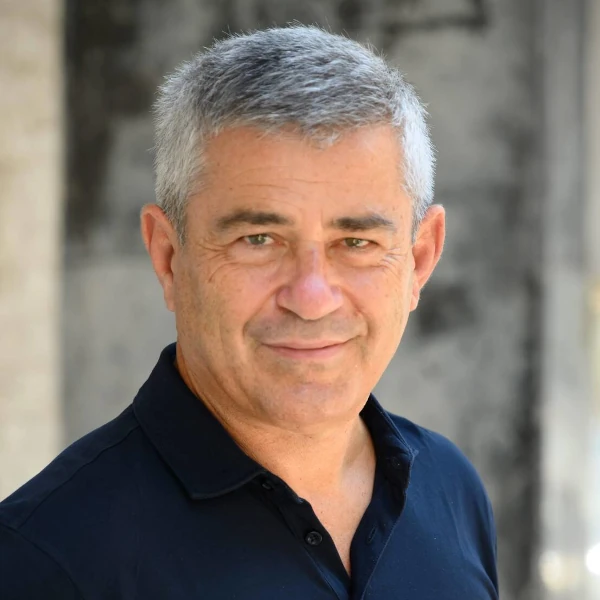
Nikos Stergiopulos
EPFL, Lausanne, Switzerland
Nikos Stergiopulos
EPFL, Lausanne, SwitzerlandECS14
INTRODUCING THE STERGIO VALVE: THE FIRST AUTO-ADJUSTABLE GLAUCOMA DRAINAGE VALVE
N. Stergiopulos1,*
1EPFL, Lausanne, Switzerland
The Stergio glaucoma valve is a novel glaucoma drainage device which dynamically auto-adjusts flow resistance in order to keep IOP at the target levels. Previously, RHeon Medical had developed the eyeWatch system, which was the world’s first adjustable glaucoma drainage device. The eyeWatch system proved to be very efficient in limiting hypotony and produced excellent long-terms results in terms of success rates as well as rates of complications. The eyeWatch device, however, is relatively bulky, expensive to manufacture and requires human intervention for its adjustment. The Stergio glaucoma valve is an auto-adjustable device, requiring no human intervention. Furthermore, it is about 5 times smaller in size than the eyeWatch and it is much simpler and cost-efficient to manufucture. The Stergio valve’s working principle is based on the Starling mechanism and provides for a stable upstream pressure regulation at the desired range, independently of variations in aqueous humor flow and distal resistance. In the early days post-implantation when distal resistance due to fibrosis is minimal, the Stergio valve automatically shuts down to increase resistance and keep IOP in the targeted range, avoiding hypotony. In later stages, as the bleb forms and distal pressure increases, the Stergio valve automatically opens up to lower its resistance and continue keeping IOP in the desired range.
The Stergio valve has been fully tested in vitro and gave outstanding results. The valve is also tested in animals to verify that the presence of fibrosis does not alter its functional characteristics. The next step is a pilot clinical study in humans, which is currently under preparation.
Company website: www.rheonmedical.com
-

Rick Lewis
ViaLase, Inc, Aliso Viejo, CA, United States
Rick Lewis
ViaLase, Inc, Aliso Viejo, CA, United StatesECS15
INTRODUCTING THE FIRST IMAGE-GUIDED FEMTOSECOND LASER TREATMENT FOR GLAUCOMA
R. Lewis1,*
1ViaLase, Inc, Aliso Viejo, CA, United States
ViaLase, Inc. is a globally-minded, venture capital-backed, clinical stage medical technology company located in Aliso Viejo, CA. ViaLase is focused on disrupting the conventional glaucoma treatment paradigm with the introduction of a truly noninvasive image-guided femtosecond laser treatment that enhances glaucoma patient care. With a leadership team that has vast experience developing, designing, manufacturing, and commercializing the first femtosecond lasers for ophthalmic surgery for refractive and cataract patients, ViaLase is now bringing that expertise and innovation to glaucoma patients. ViaLase believes in collaborating closely with health care providers, payers, societies, and patients to inform our product development and commercial activities with the goal of bringing this revolutionary treatment to glaucoma patients across the globe.
Company website: www.vialase.com
-

Gilad Litvin
CorNeat Vision, Raanana, Israel
Gilad Litvin
CorNeat Vision, Raanana, IsraelECS16
THE CORNEAT ESHUNT, CORNEAT VISION’S REVOLUTIONARY GLAUCOMA DRAINAGE DEVICE: EXTENDING MINIMALLY INVASIVE SURGERY TO SEVERE AND REFRACTORY PATIENTS
G. Litvin1,*
1CorNeat Vision, Raanana, Israel
CorNeat Vision has developed a number of medical devices, first and foremost the CorNeat eShunt, a revolutionary glaucoma drainage device, that provides, for the first time, a long-lasting, minimally invasive solution for severe and refractory glaucoma patients. This device is designed to regulate the intraocular pressure and addresses the shortcomings of existing solutions. It is efficacious and stable immediately post-op as resistance to flow is dictated by its inlet and tube design and not by a valve or scarring around the outlet. The CorNeat eShunt outlet is uniquely positioned in the intraconal space, an area that does not scar and clog over time. The positive pressure (approx. 4mmHg) in this area reduces the risk of hypotony. The fat in the intraconal space can absorb the drained aqueous humour, without creating a bleb. The device seamlessly integrates with the ocular tissue using an integral non-degradable tissue-integrating patch. This significantly shortens and simplifies the surgical procedure and minimizes the risk of tube exposure. This, plus the fact that there’s no reservoir, reduces the surgical procedure to approximately 20 minutes.
CorNeat Vision products and solutions leverage a unique permanent tissue-integrating material technology, CorNeat EverMatrix™, to address unmet needs in ophthalmology and beyond. The CorNeat EverMatrix™, is a non-degradable biomaterial that enables implants to avoid the foreign body response—an immunological process leading to the rejection and degradation of implanted devices. This challenge fundamentally affects their performance, durability, and therapeutic utility.
The EverMatrix™ seamlessly and permanently embeds with living soft and bone tissue without triggering an inflammatory response. Its durability and flexibility, coupled with its bio-integration capabilities, mark a new era of implants that can:
– Bio-mechanically integrate with surrounding tissue
– Permanently reinforce soft tissue and accelerate healing
– Act as a membrane for guided soft tissue and bone regeneration
– Conceal irritating implants
– Enable sensors to continuously remain in contact with surrounding tissue
The EverMatrix™ is also set to displace harvested and processed human and animal tissues, including scaffolds and extracellular matrices, used in a variety of surgical procedures across diversified fields of medicine.
The features and benefits of the EverMatrix™ were proven histologically and clinically in various pre-clinical and clinical trials, including in humans. Findings demonstrate full fibroblast colonization and abundant collagen deposition with no encapsulation, rendering the EverMatrix™ an integral part of the surrounding tissue. The recent FDA 510(k) clearance of our first product, the CorNeat EverPatch, a synthetic tissue substitute for ocular surface surgeries, continues to validate the usage of the EverMatrix™.
Company website: www.corneat.com
-
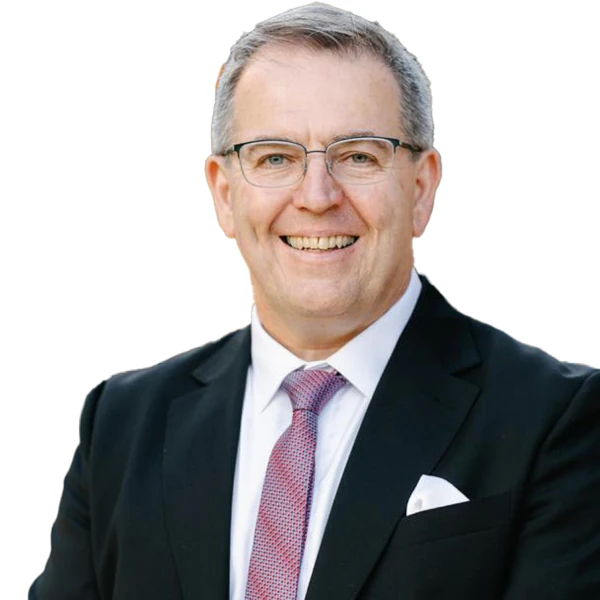
Yaacov Michlin
Biolight, Ramat Gan, Israel; IATI, Herzlia, Israel; VISCI, Ramat Gan, Israel
Yaacov Michlin
Biolight, Ramat Gan, Israel; IATI, Herzlia, Israel; VISCI, Ramat Gan, IsraelECS17
VISCI LTD. – THE SAFEST SOLUTION FOR GLAUCOMA SLOW RELEASE DRUG DELIVERY VIA SUBCONJUCTIVAL IMPLANT
Y. Michlin1,2,3,*
1Biolight, Ramat Gan, 2IATI, Herzlia, 3VISCI, Ramat Gan, Israel
ViSci address the clinical need of non compliance of Glaucoma patients by providing a safe and simple implant that slowly releases Latanprost. Our implant is currently the safest available given it is located in the subconjuctiva. We already shown compeling clinical results in a Phase I/IIa in the US in which our implant maintained IOP below 18 similar to Latanprost for 3 months.
Currently we are in animal clinical study aimed to provide same release profile with a bio-degradable implant. We will have the results before the ESCRS.
ViSci is currently fully funded by Biolight – a VC focusing on ophthalmology and we are looking to partner for further development. We estimate that to get the bio degradable implant approved by FDA we will need ~20-30M USD and it will take ~ 3 years. we have strong patent portfolio and an excellent SAB headed by Dr. Ike Ahmed.
Company website: www.bio-light.co.il
-
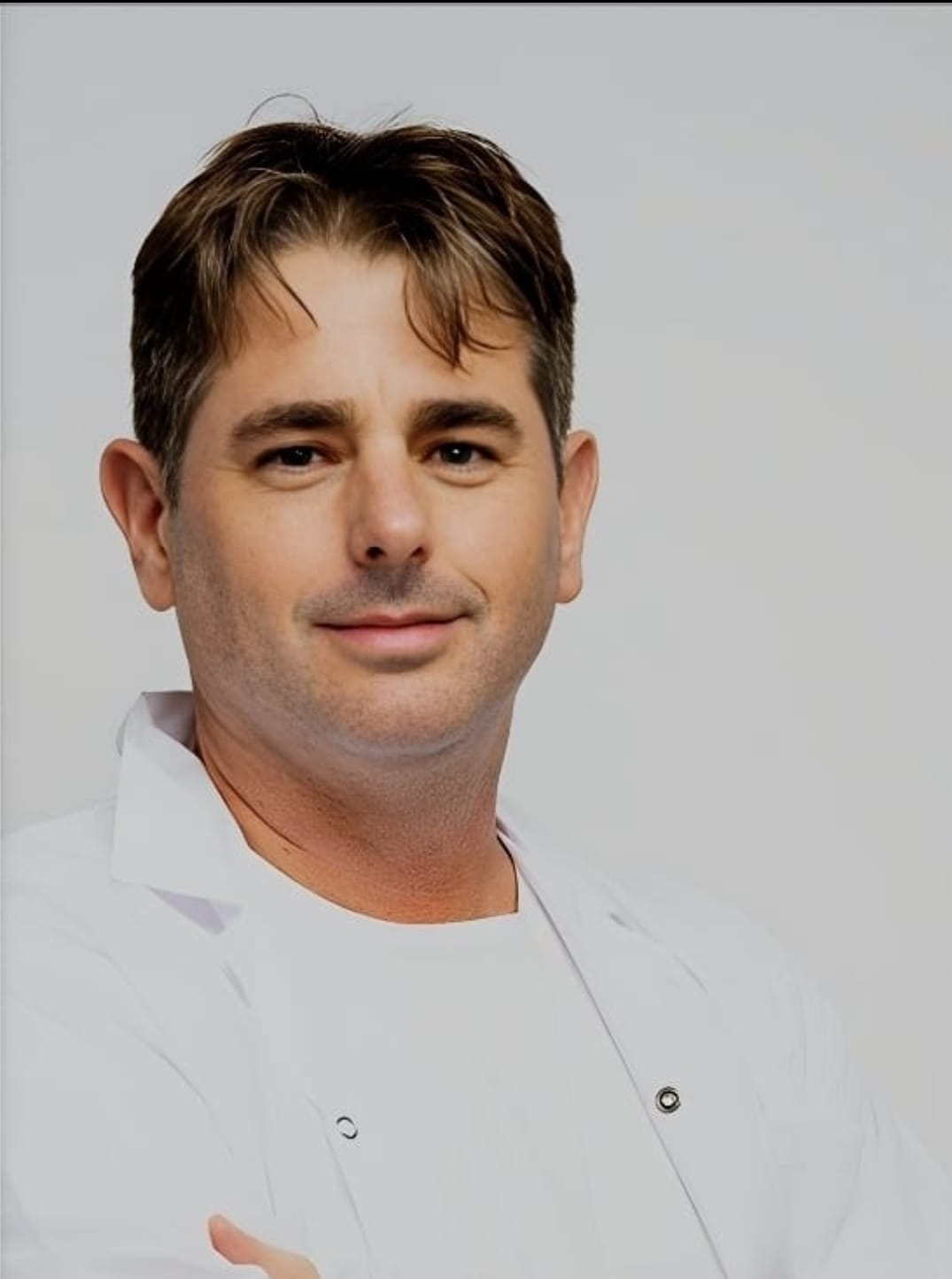
Ofer Daphna
EyeYon, Rehovot, Israel
Ofer Daphna
EyeYon, Rehovot, IsraelECS18
ENDOART UPDATE, NEW HOPE FOR PATIENTS WHO HAVE FAILED ON HUMAN TISSUE, OR WHO ARE NOT SUITABLE FOR HUMAN TISSUE
O. Daphna1*
1EyeYon, Rehovot, Israel
EyeYon is currently commercialising EndoArt in a limited market release in the EU, focusing on the most respected KOL’s who are currently generating Real World evidence, demonstrating safety, durability (we have a patients at +5 years with EndoArt) and efficacy. EyeYon is also working with the FDA and NMPA for regulatory approval in China and the USA.
This forum will allow us to share updates for both the clinical and commercial efforts with EndoArt. Endoart is primarily being used for patients who have had multiple failures on human tissue, glaucoma surgery patients (high probability of failure) and patients who do not want human tissue – people prefer synthetic material vs human tissue. EndoArt is also being used as a backup if there is an issue with the human tissue graft during surgery.
Company website: www.eye-yon.com
The call for Emerging Company Showcase applications is now closed. Thank you for your submissions!
The ESCRS is looking to identify smaller companies with emerging technologies to present at the 3rd ESCRS iNovation® Day taking place on 6 September 2024 at the Fira Barcelona Gran Via.
The goal is to have emerging technologies presented to a large ophthalmic audience of doctors and industry to accelerate market introductions.
Presentations will be reviewed and discussed with a panel of ESCRS doctor leadership and key industry leads. Presenting company applications will be reviewed by the ESCRS iNovation® Day Programme Committee, that includes the key leadership of the ESCRS organisation. If your company is selected, the fee to present is €1,500.
IMPORTANT DATES
Application Submission Deadline
31 May 2024, 23:59 CEST
Selections Announced
July 2024
Final Presentations Due
1 August 2024
Why you should join us for the Emerging Company Showcase
Share New Technologies
Share new technologies with a large ophthalmic audience.
Greater Visibility
Gain greater visibility and recognition in the field.
Accelerate Growth
Accelerate growth and market introduction.
